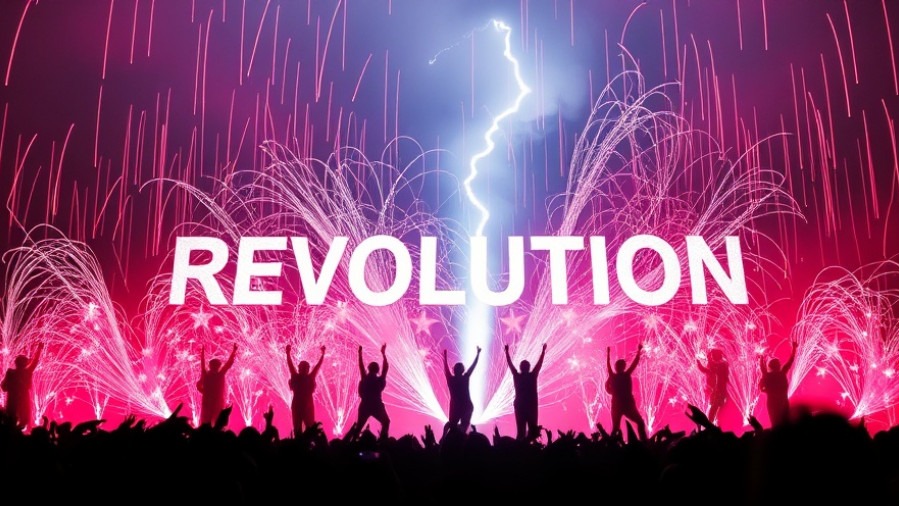
Tesla's Revolutionary Approach to AI and Its Business Implications
Tesla recently unveiled a transformative glimpse into its AI strategy, highlighting the company's significant jump towards an "end-to-end" AI framework. Ashok Elluswamy, Tesla’s Vice President of Autopilot, delineated this innovative approach that aims to not only revolutionize the automotive sector but also set the stage for the future of AI in various business domains.
Understanding End-to-End AI: The Mechanics Behind It
Unlike traditional modular AI systems that rely on separate components for different functions—such as perception, planning, and control—Tesla's method employs a singular neural network. This network processes data from various sources, including camera pixels and audio inputs, and translates them directly into driving commands such as steering and acceleration. This cohesive system captures subtle, human-like decision-making capabilities, fundamentally enhancing the autonomy of self-driving vehicles.
Analysts argue that this technology demonstrates a blueprint for AI integration in the workplace, where similar models can be deployed across different sectors. Just as Tesla's vehicles are learning to predictively react to their environment, AI agents in business could evolve to understand contextual nuances, drastically reducing the need for human intervention over time.
From Miles Per Disengagement to AI Metrics
In a discussion with Paul Roetzer, founder of Marketing AI Institute, it became evident that the evolution of Tesla’s self-driving technology provides a meaningful parallel for AI integration in the work environment. Traditionally, self-driving improvements were measured by "miles per intervention"—a direct reflection of how often a human had to step in. Roetzer notes that Tesla's advances have led to a notable shift—his vehicle approaches 95% autonomy without disengagements. This suggests that rather than intervening frequently, employees may eventually find themselves taking their hands off the proverbial wheel.
Roetzer proposes a future where AI effectiveness in business settings will be quantified by "actions per disengagement." As businesses increasingly adopt AI technologies, the reduction in necessary human interactions will signal a major transformation in job structures and responsibilities across industries.
The Expansive Vision Beyond Automotive
The implications of Tesla’s AI enhancements are not confined to the driving experience; they extend to broader applications in robotics and automation. The company's ambitious plans to produce humanoid robots, dubbed Optimus, illustrate a strategic pivot from being merely an automotive manufacturer to becoming a pioneer in AI and robotics.
By leveraging a unified AI framework, the same principles governing its autonomous driving systems can be applied to a diverse range of tasks within other industries. As more companies pursue automation through AI, those who can integrate such versatile systems will likely lead the charge into a new era of productivity and efficiency.
Challenges and Considerations in Automation
However, the journey towards full automation carries its challenges. Industry critics have highlighted potential pitfalls stemming from an overestimation of automation’s capabilities while underestimating the human element in complex tasks. Elon Musk himself acknowledged past mistakes regarding excessive automation, stating that humans are still essential for navigating unforeseen challenges—something that current AI systems are not yet fully capable of handling.
The burgeoning integration of AI also raises questions about workforce displacement. With sectors across the globe adopting AI tools, professionals must prepare for shifts in job roles and the skills required. Retraining efforts may struggle to keep pace with technological advancements, necessitating swift adaptability from employees.
Conclusion: Moving Forward with Optimism
Tesla serves as a prime example of the potential future of work, buoyed by advanced AI technologies. The company's approach not only redefines our expectations of autonomy in vehicles but also sets a precedent for AI’s integration into varied industries. As organizations worldwide assess the implications of automation, the balancing act between technological advancement and human skills will be crucial in shaping a sustainable future.
As we look ahead, the growth of AI will inevitably redefine how we approach daily tasks and jobs. By embracing these changes, companies and workers alike can usher in a new, innovation-driven landscape that benefits all.
 Add Row
Add Row  Add
Add 




Write A Comment